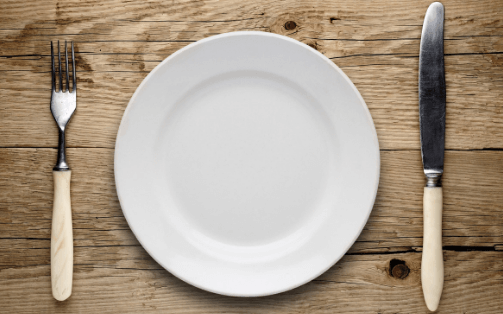
How to adopt strategies from the new science of fasting so that you can decrease your risk of disease and optimize your weight.
Studies have shown that by following a very low-calorie food plan with very specific nutritional rules — a 5-Day Fasting Cycle — repeated every month for 3 months in a row, can help you achieve lasting weight loss, a boosted metabolism and improved blood markers of disease and aging.
Fasting is defined as an absence of food for a specific period of time that stimulates a regenerative state of health in one’s body without intentionally inflicting harm. Our program tricks your body into responding as if it were fasting, providing all the great health benefits without actually starving yourself!
Research has shown substantial benefits to following the principles of the Fasting Mimicking Diet:
- Extended Lifespan and reduced cellular aging
- Loss of abdominal fat without loss to muscle mass
- Reduced desire to overeat or eat sugar
- Improved insulin sensitivity
- Drop in loss of bone mineral density
- Improvement in cognitive state
- Reduced risk of developing disease
- Improved gut health
- Enhances the body’s innate ability to function optimally to regenerate at the cellular level, detoxify environmental toxins, and metabolize nutrients.
It is well known that calorie restriction or changes in dietary composition can enhance healthy aging. The trick was for researchers to figure out HOW to help people implement calorie restriction in a way that is sustainable.
Here are a few key studies demonstrating how and why these programs work. They are all published by Valter Longo, PhD, the researcher who has led the way and created a fasting program that produces these medical benefits.
- “Fasting-mimicking diet and markers/risk factors for aging, diabetes, cancer, and cardiovascular disease”. Published in 2017, this research triggered a huge buzz in the functional medicine and nutrition community because it was the first to show the results of a fasting-mimicking diet (FMD)—low in calories, sugars, and protein but high in unsaturated fats—on markers/risk factors associated with aging and age-related diseases. They compared subjects who followed 3 months of an unrestricted diet to subjects who consumed the FMD for 5 consecutive days per month for 3 months. They found that three FMD cycles reduced body weight, trunk, and total body fat; lowered blood pressure; and decreased insulin-like growth factor 1 (IGF-1). (Wei et al., Sci. Transl. Med. 9, 8700 (2017))
- “Dietary Restrictions and Nutrition in the Prevention and Treatment of Cardiovascular Disease”. In this article, Dr Longo discusses how intermittent and periodic fasting interventions can help prevent and treat CVD. (Circ Res. 2019;124:952-965.
- Fasting-Mimicking Diet Modulates Microbiota and Promotes Intestinal Regeneration to Reduce Inflammatory Bowel Disease Pathology. This study showed that cycles of a fasting-mimicking diet (FMD) reduced intestinal inflammation, increased intestinal regeneration, and stimulated the growth of protective gut microbial populations in a mouse model displaying symptoms and pathology associated with IBD. They also show that a similar FMD is safe, feasible, and effective in reducing systemic inflammation and the consequent high levels of immune cells in humans. (Rangan et al., 2019, Cell Reports 26, 2704–2719).
- Cancer: FMDs can reduce cancer incidence and aging-associated immunosuppression/ immunosenescence, a process aided by hematopoietic stem cell-based regeneration (Brandhorst et al., 2015; Cheng et al., 2014)
- Multiple Sclerosis and Diabetes: FMD cycles ameliorate or reverse disease progression in mouse models of multiple sclerosis (MS), and type I, and type II diabetes (Choi et al., 2016; Cheng et al., 2017).
PUTTING THE FASTING CYCLING DIET INTO PRACTICE
Whether you want to lose weight or need to treat a health issue, it is clear that this strategy helps everyone. The definition of health isn’t simply the absence of disease; it is optimal functioning throughout your lifespan. Using intermittent fasting as a strategy is a proven strategy and a practice that can be built into every day lifestyle goals.
To do this, with the help of Keri Lynn MacElhinney (our Nutritionist at Blum Center for Health), we built our NEW, signature weight loss program around this central core concept and created the Blum Alternate Fasting Diet (AFD).
For our Blum AFD, we combine the principles of anti-inflammatory plant-forward eating with intermittent fasting and low calorie 5-Day Fasting Cycles, creating a whole-foods, sustainable program that promotes healthy weight loss, and improves metabolism and markers for disease — all while eating delicious food that supports the gut microbiome and the removal of environmental toxins that store in your fat cells preventing weight loss.
Our Blum Alternate Fasting Diet, features a 3-month guided weight loss program that includes one 5-Day Fasting Cycle per month.
We provide all the information you need to follow this yourself, but to make it easy and convenient, we have teamed up with Organic Pharmer to create a fixed 5-day menu that follows the nutritional guidelines and provides a delicious and satisfying whole foods, ready-to-go option for the 5-Day Fasting Cycle part of the program. (LINK)
There is also a supplement company that created packaged foods for you to eat during the 5-Day Fasting Cycle and you can read about them HERE.
DO IT WITH US!
We will be offering our Blum Alternate Fasting Diet as a group program for the first time at Blum Center for Health, starting June 3. I will be teaching the first class and would love to have you join us! LEARN MORE ABOUT THE PROGRAM HERE








